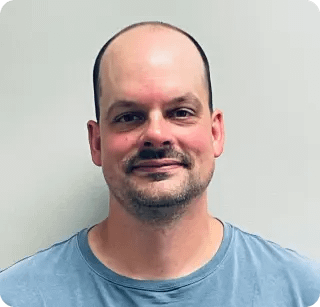About
The rando advantage
Since 1949 Rando® Machine has led the way providing innovative and high quality air laid machinery. Rando offers world-class
fiber preparation, web formation and recycling machinery that create high quality webs from the widest array of natural and
synthetic fibers. Rando has significantly invested in new capabilities including a second manufacturing site since coming
under new ownership in 2019.
fiber preparation, web formation and recycling machinery that create high quality webs from the widest array of natural and
synthetic fibers. Rando has significantly invested in new capabilities including a second manufacturing site since coming
under new ownership in 2019.
Quality

Consistency

Innovation

Customer Satisfaction
Our Mission Is
To continue to be a leader in our industry and increase sales of machines, parts and service.
Victor, NY
Since 1949 our Western NY location has been the center for engineering, spare parts, sales and marketing. Our experienced machinists reclothe/rewire wired rolls as well as fabricate custom rolls. Assembly of web forming equipment is based out of NY as well. Our Pilot Line for testing and product development brings in customers from around the globe.
Lafayette, IN
Our main manufacturing site, including CNC machining, sheet metal fabrication, welding, paint, and electrical controls. Here we also assemble fiber preparation equipment, and perform complete line testing in our 16,000 ft^2 assembly area.

Victor, NY
Since 1949 our Western NY location has been the center for engineering, spare parts, sales and marketing. Our experienced machinists reclothe/rewire wired rolls as well as fabricate custom rolls. Assembly of web forming equipment is based out of NY as well. Our Pilot Line for testing and product development brings in customers from around the globe.

Lafayette, IN
Our main manufacturing site, including CNC machining, sheet metal fabrication, welding, paint, and electrical controls. Here we also assemble fiber preparation equipment, and perform complete line testing in our 16,000 ft^2 assembly area.

Our Leadership
Our
History
1943

Season
Consolidate Machine Tool Corporation’s President, Arthur Ingle, predicts a huge drop in the machine tool business. A joint development with Price Brothers & Co. Ltd. of Canada used Dr. H.S. Hill’s idea of passing newsprint sulphite pulp screen rejects between gyrating plates to mechanically de-fiber them into useful fibers. This caused curling of the fibers, resulting in improved strength in the new newsprint sheets. The curling effect gave Rando its original name “Curlator.”
1945

1945
Original Rando Webber is made (Circa 1945-1946).
1946
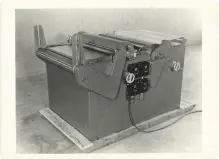
Season 11
Company’s second prototype (today’s air laid machine) built to use as a picker lap of shoddy or reclaimed tire cord to produce a random fiber web. *The world’s first machine designed specifically for the infant formed fabrics industry—now on display at the Smithsonian Institute.
1945

1945
Consolidate Machine Tool ships the first commercial lap-fed 40-inch Rando Webber.
1949
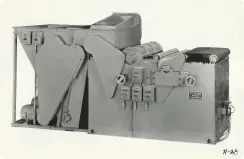
Season 9
Curlator Corp. is established as a separate entity—eventually the name changes to Rando Machine Corporation. After discovering the Rando Webber isn’t sufficient enough to produce high quality web structures, Curlator Corp. patents the Rando Feeder air bridge – yielding a higher quality web structure.
Early 1950s
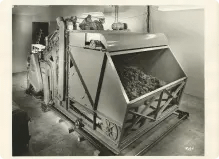
Season 8
Rando revolutionizes an improved Model 40 Feeder and Webber – machines that efficiently produced high quality webs from 100 percent synthetics. Demand for wider machines leads to the 84-inch Rando Feeder and Webber the next year.
1960s
Season 7
Rando purchases Caroline Machinery Company (CMC) – a manufacturer of special fiber prep machinery in Charlotte, North Carolina. Soon after the purchase of CMC, the company engineered and installed the first commercial production plant for fiber-to-fiber blending of fibers with dissimilar characteristics. A few years later, Rando completely redesigns the Rando B Webber – increasing production rates 25 percent over the previous model. During this transitions, demand for wider webs resulted in a 110-inch Rando Feeder and Webber machine – opening the doors for the non-wovens industry with the world’s first wide-random web structure.
Early 1970s
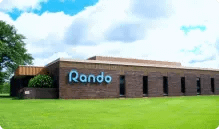
Early 1970s
Rando purchases Muller and Wayaffe – the second largest manufacturer of paper tube machinery in the world – in Ensival, Belgium to further serve European export markets. The company was renamed S.A. Rando –producing Rando fiber-handling equipment along with tube machinery.
Early 1980s

Season 5
Rando releases the CMC Levelfeed.
2013
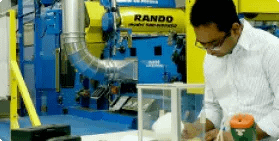
Season 4
Rando re-establishes its testing lab at the Macedon, New York facility. Customers can utilize Rando's lab facility to help test, experiment and innovate with various fibers and processes.
2014
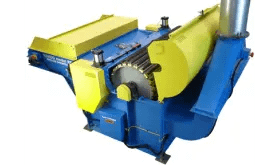
Season 3
The Rando Shredder® – the latest addition to Rando’s machine line.
2019
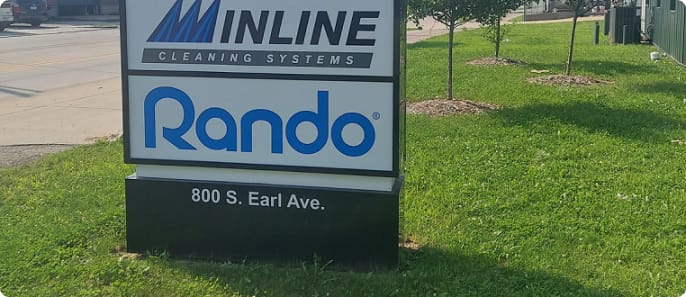
Season 2
Rando has significantly invested in new capabilities including a second manufacturing site since coming under new ownership in 2019.
Our History

1943
1943

1945
1945

1946
Company’s second prototype (today’s air laid machine) built to use as a picker lap of shoddy or reclaimed tire cord to produce a random fiber web. *The world’s first machine designed specifically for the infant formed fabrics industry—now on display at the Smithsonian Institute.
1946

1947
1947

1949
1949

Early 1950s
Early 1950s
1960s
1960s

Early 1970s
Early 1970s

Early 1980s
Early 1980s

2013
Rando re-establishes its testing lab at the Macedon, New York facility. Customers can utilize Rando's lab facility to help test, experiment and innovate with various fibers and processes.
2013

2014
2014

2019
2019

2023
2023



